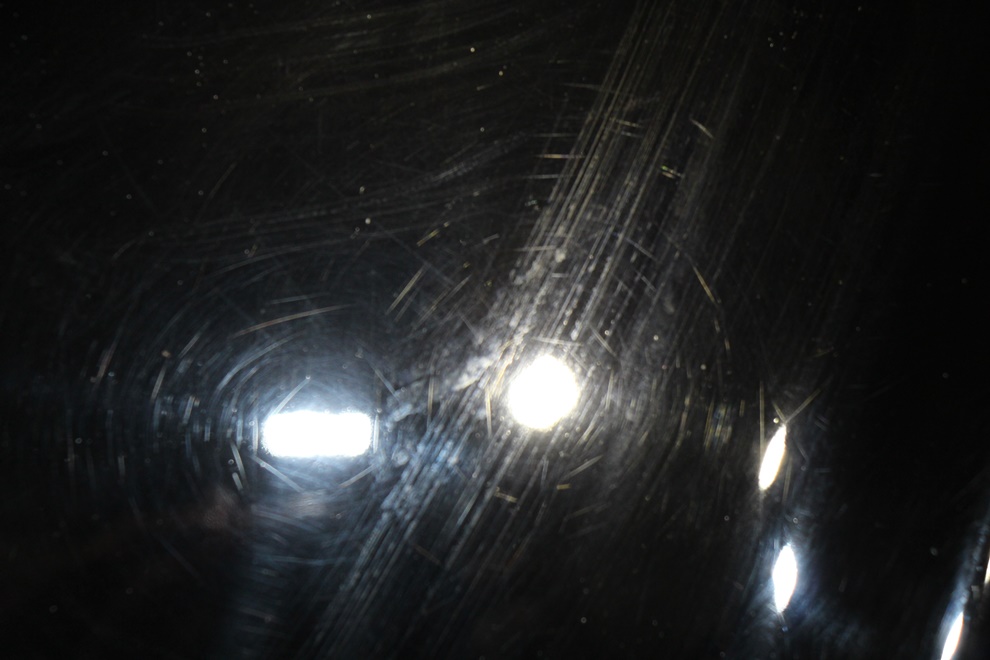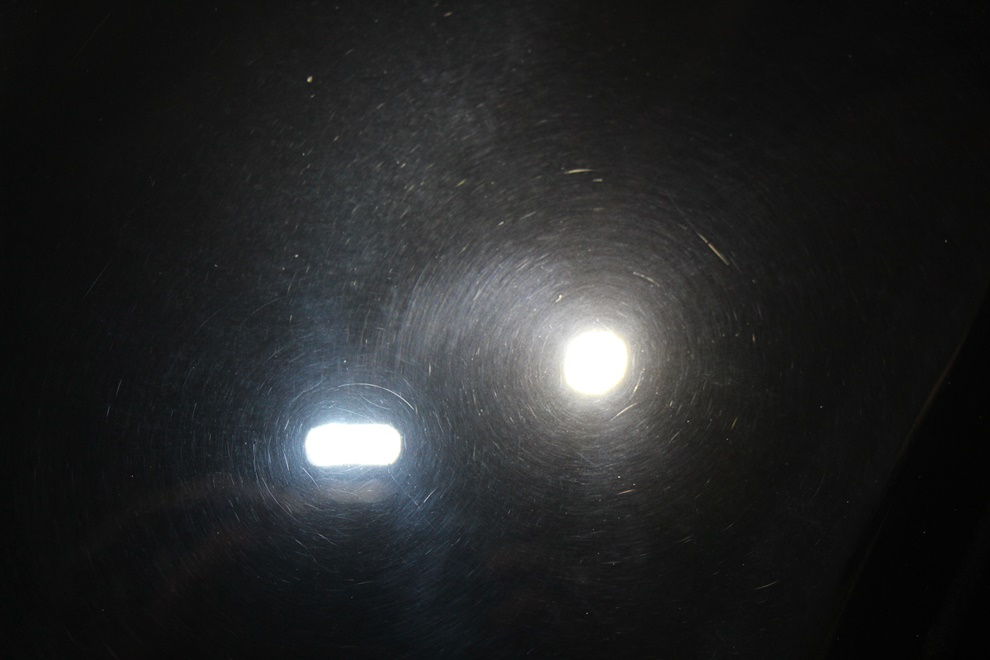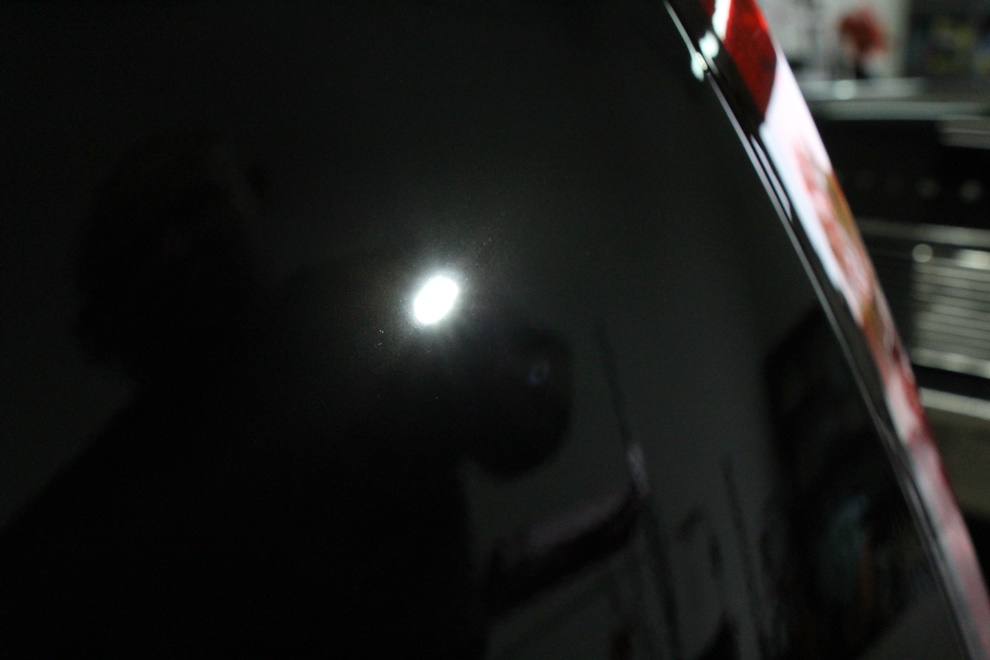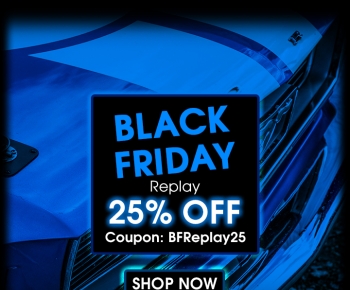Test Panel: Obtaining the Best Results
by Eric SchusterIt’s the most common question I see asked…
What pads and products do I need?
To be honest, there is no clean cut answer to this one. Different paints start out with different damage, on different colors, in different climate conditions, with different expected end results. To say “this pad, with this product, will lead you to great results” would be incorrect. You can get a generalized game plan together and just go for whatever results you can get from the given products and pads, or you can test out multiple combos and see which will give you the best results.
Here is my process on how I would test a panel to see which combo will give me the best desired end result:
- Wash the whole car
- Clay the whole car
- Tape off a couple sections
- Compound the sections until you have the result you are looking for varying the pad/product choice up or down
- Choose the best section from the compound step that gave you the correction you are looking for based on how many steps of correction you plan on doing (full corrections are usually 3 or 4 steps, 80 to 90% jobs are 2 or 3 steps, 50 to 75% jobs are 1 or 2 steps) – the more steps, the more aggressive you can get
- Polish that section with your go to product and pad of choice
- Always do a wipedown with something to remove polishing oils at this point to ensure you are not filling anything in. Carpro eraser is my go to product for this.
A way to test out if the pad/product is removing the intended damage (scratches, micromarring, haze, etc) (if you can’t tell if it’s micromarring from the compounding left over, or if it’s micromarring from the polishing combo) is to move away from the compounded test spot and try out your polish and pad combination on a clean and prepped section that is NOT compounded. This will allow you to see if that combo will finish down to your satisfaction. You aren’t looking for scratch removal, you are looking to make sure the finishing polish is fine enough to not leave behind micromarring of its own. If it does, then you know you need to alter the aggressiveness down to something less aggressive. If it does not leave any micromarring, then try it on the compounded section again and see if there remains any micromarring or compounding haze. If it does, then you will need a middle step between compounding and final polishing. If it does not, then you are probably done testing the combos, and ready to compound the whole car, then polish the whole car (do not do both section by section).
Remember, the more aggressive you get, the more steps it will take to make the panel look right, but the better the end result because more damage will be removed. Correction comes from the compounding and heavy polishing, gloss and clarity comes from the medium and fine polishing steps. Below are a few pictures of some examples of test spots I performed on a CTS-V.

The paints starting condition
This approach was too aggressive. I used a microfiber disc and the M100, which left the panel chewed up.
This approach was much better. Using the microfiber disc and the D300 I achieved results that will take less aggressive measures to remove the compounding haze.
The above photo is after two polishing steps using Menzerna 2500 and Menzerna 4500 to follow up.
Below are some of my recommendations for both soft and hard paint types.
Soft Paint:
Hard Paint:
- Meguiar’s M100 & Meguiar’s Microfiber Discs
- Meguiar’s D300 & Tangerine Pad
- Sonax Perfect Finish & Black Pad
Of course, those would be starting points and not absolutes. Mixing and matching those pads with those products would give you nine solid combos to accomplish your goals. You can use any of those polishes with any of those pads to get correction. I have done some crazy combos to get tricky paint to finish down…like M100 on a tangerine pad, then D300 on an orange pad, Sonax on a tangerine pad, and Sonax again on blue pad. The combo was strange, but it worked!












you mentioned different techniques and products for soft paint and hard paint. how do I determine whether it is soft or hard?
Is there a difference in German paint? Japanese paint? What should I know about this subject?
Barry
following up on my last question, I’d like to add that my customers leave their vehicle with me all day and pick it up about 4 pm. that’s all I have time for. And half of this time is spent on interior cleaning. I really can’t spend 60 hours on paint correction and polishing. This policy seems different from what you folks publish. I’d love to have an expensive car to make spectacular…like I see in your pictures. But those kind of cars never come my way.
People seem to like my work, but my skills are rudimentary at best.
I’d like to attend official classes to learn the skills I see in the photos but fear I’d never use them anyway.
Thanks for your advice/input.
Hi Eric
Informative write up and I’ll be trying out a few of those combinations for sure.
What sort of lights are you using there out of interest? My guess is a Brinkmann and a Rupes penlight?
Cheers
Lee
Lee – its just a LED light and the camera flash. Typically Ill use halogens and LED, sometimes with the shop lights on and sometimes with them off.
Barry – soft or hard paint is determined by the make and model sometimes. For instance, AUDI, BMW and Mercedes are typically hard, while Porsche, Ferrari and Lexus are soft. That is a general statement though, some paints will be harder than others even in manufacture line. You always need to do a baseline test product and pad to see where your paint falls. For instance sonax Perfect finish and a hydrotec polishing pad will do a bit of correction, while finishing down. If it doesnt do any correction for you, but the panel is glossy, its harder paint and you need to get more aggressive in order to do any correction. If that combo leaves the finish corrected and very hazy, you need something finer to work with as you are too aggressive fo the paint.
I have done final polishing with SPF on a black pad on lexus black paint and had it finish down very well. On another lexus black paint job, I needed a red pad and Menzerna 4500 to finish down well enough because anything else would micromar the finish!
Barry – If you don’t have a need for real paint correction, I wouldn’t stress on it. Continue to grow your business and provide services that fit your clients demand! If you do one steps and interiors, don’t worry about having 5 different compounds, 7 polishes and 8 pad choices in order to do a proper 3 or 4 step correction. Sticking with what you know will serve you best, maybe just find some paint correction guys to refer to/sub-contract with. Trying to do everything can become costly and over-whelming as its a whole different sales pitch, learning curve, technique.
That is a logical response Eric. Thank you for it.
But perhaps you can tell me the difference between soft and hard paint. European paint vs American or Japanese paint. It seems this would be fundamental before I start a beautification process.
I’m under the impression that a $4000 paint job would be treated differently than a $1000 job. Or a new paint job vs an older paint.
Having limited knowledge in this field might lead to the wrong approach to the car which rolls to my shop. If I have some general standards as described above, perhaps I could do an even better job…in the same amount of time allotted to me.
Thanks.
Actually the first picture of over aggressive correction I’ve seen. So I take it that you have to correct that step with a less aggressive poduct? More passes? Informative post thanks.
Barry, it’s not the price of the paint job. Someone painting their own car can claim it was a 1000 dollar job, but it be a show winning paintjob. Someone else can pay 10k for a paintjob and it be filled with sanding scratches all throughout and under the clear. You never know.
As I mentioned, you need to do a test spot to figure out hardness. Prime example is a tesla I’m currently working on. Normally it’s softer paint and corrects really easily and well. Not this one, it’s taking my most aggressive combo just to get out 80% of the damage. The whole car is like this, and I’ve never dealt with a tesla like it. (I’ve done quite a few teslas)
If I were you, I would get all the pad combos you can, and then get 3 main polishes…something like meguiars m100, menzerna 2500, menzerna 4000. Using these three main products, with assorted pads will get you decent results on any car.
My current shelves are filled with 5 heavy compounds, 5 mid level polishes, and 3 final polishes. I have 10 different pad types, and about 10 to 20 of each pad…that’s a value of over 2000 dollars. But again, I do this everyday. You may not and may only need 400 to 500 in product and pad.
Thanks for taking the time to write this and answer Barry’s questions in detail. Just the info I needed.